- Dina Recommends,Superheroes and Other Heroes,Thoughts on Comics
Dina Recommends: The Life and Times of Scrooge McDuck
- December 16, 2019
This is going to be a slightly different installment of Dina Recommends. Usually I just present the work as best I can, talk a little about setting and characters, and why I think this is good, maybe include a bit of criticism for fairness’ sake… and I’m still going to do that, but not quite in the same way. I’m going to have to go a little deeper than usual, talk more about the background and history, and maybe go to places that I don’t usually go. Because this particular work is a bit of a special case. Partly because it IS very well-known and has millions of fans all over the world… but in its native North America, it remains sadly unknown and unappreciated. And partly because it may be one of the comics that’s most special to me personally.
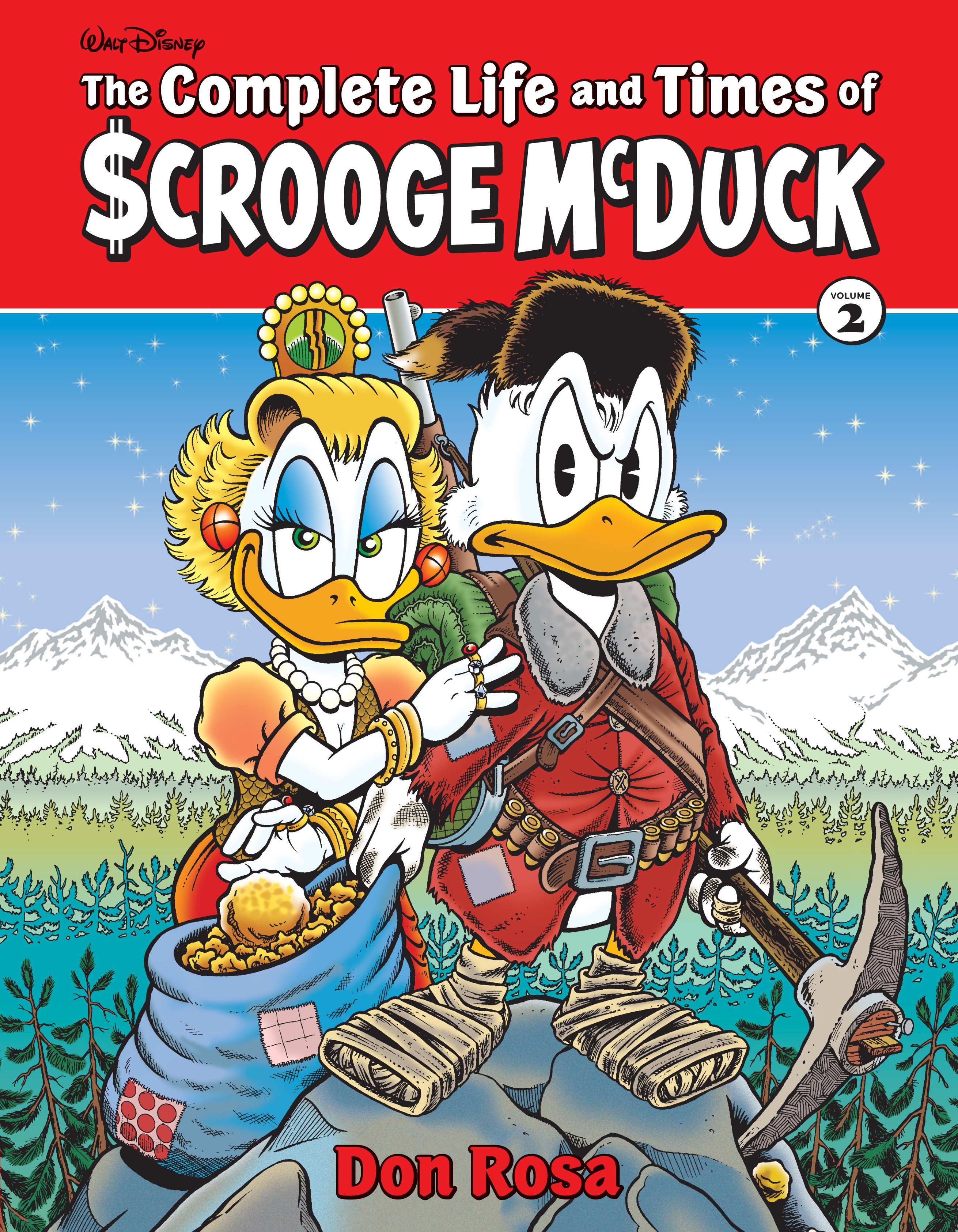
The Life and Times of Scrooge McDuck, written and drawn by Don Rosa, is one of the best comics ever made. Not just one of the best Disney comics, or one of the best funny animal comics, or one of the best comics of its time… one of the best comics ever made, period. It’s epic, funny and tragic, and sometimes all three at the same time. If you only read one Disney comic in your life… well, you should read more than one Disney comic, because there are some absolute gems here, too many to list… but if you for some reason decide to only read one Disney comic in your life, make it this one.
I know a lot of my audience is American and likely to not know anything about Disney comics. In fact, depressingly many Americans don’t even know that there IS such a thing as Disney comics, much less that Disney comics are super-popular in Europe and have a long and rich publication history, to the point that for a lot of Europeans my age, “comic book” is synonymous with “Donald Duck.” Yep, THAT Donald Duck. In Europe, he’s a much bigger comic icon than Batman could ever dream of being. I remember VERY CLEARLY that I knew Donald as a comic book character first and foremost when I was a kid… he was occasionally in cartoons as well, but as far as I was concerned, he was first and foremost a comic book character.
So I think, in order to really explain the importance of this comic, I’m going to have to bother you with a bit of history. Don’t worry, I’ll try to not make it too tedious.
I’m Scandinavian, everyone who knows anything about me knows that… and in Scandinavia, like in the rest of Europe, the Disney comics are still pretty much mainstream. While Mickey Mouse is the flagship character for most of Europe, we Nordic people much prefer the far more flawed and consequently more “human” Donald Duck. The “Donald Duck & Co” comic magazine (originally modelled on the “Walt Disney’s Comics & Stories” magazine) is still published weekly, and more than anyone the man who deserves the credit for Donald and company’s popularity around here is named Carl Barks.
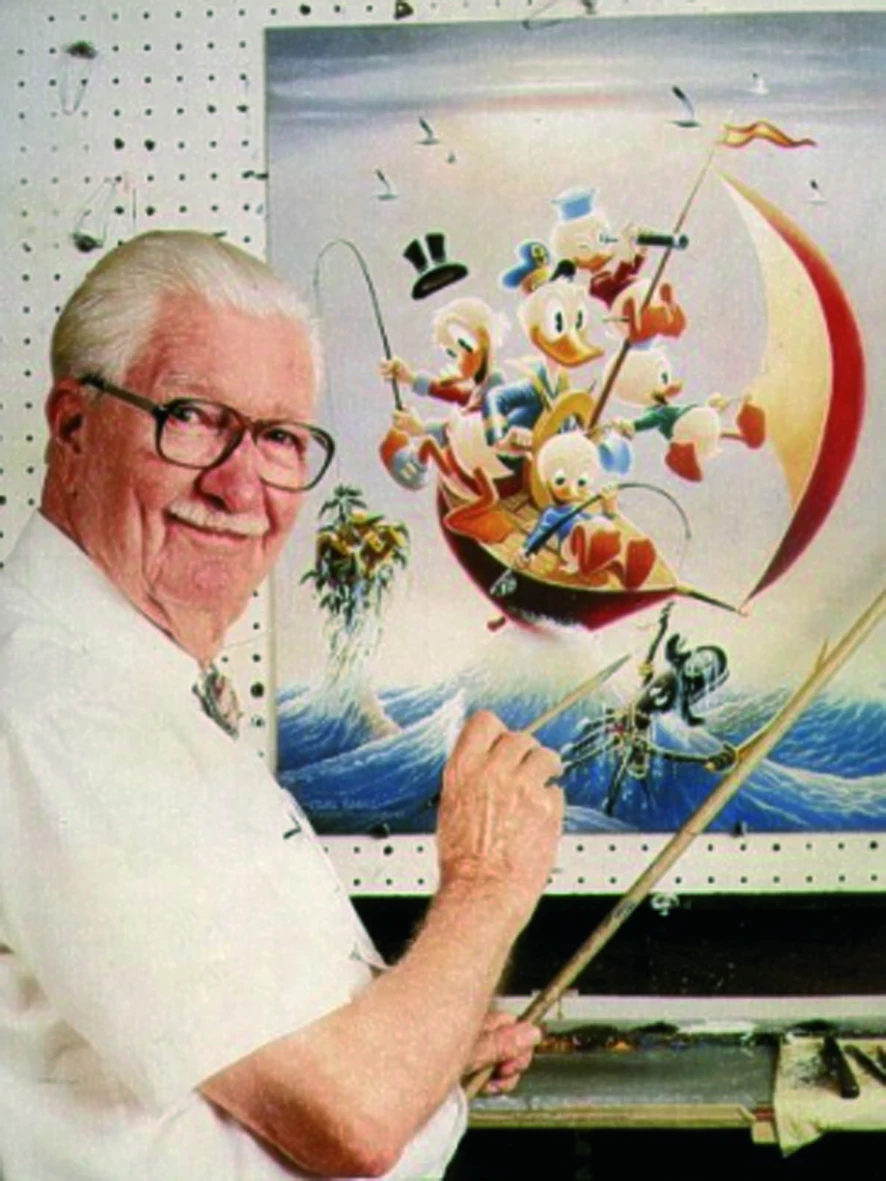
Carl Barks was an animator and story man at the Disney studios back in the 1930s, working mostly on Donald Duck cartoons (among others, the first cartoon where Huey, Dewey and Louie appeared), but he didn’t like the intense work pressure of making cartoons, and so he quit. In the 1940s, however, he began working for Dell Publishing, to write and draw Donald Duck-themed comics for Walt Disney’s Comics & Stories. Now, licensed comics at the time were mostly seen as merch, meant to sell merely because they featured characters the kids knew from cartoons, but Carl Barks had more pride than that: He set out to write and draw the kind of stories he himself would have liked to read. In other words, his comics were actually GOOD.
And thus, a legend started. Because these comics were the birthplace of Duckburg… and the birthplace of Barks’s most famous creation, Scrooge McDuck.
Some ignorant people, like the Kingdom Hearts creators, will claim that Scrooge’s first appearance anywhere was in 1967, in the educational cartoon “Scrooge and Money”… and yes, that is generally considered he first ANIMATED appearance. (Except it wasn’t… his FIRST animated appearance was a brief non-speaking cameo in the opening credits for the Mickey Mouse Club show in 1955!) But the character had already existed in comics for twenty years at that time. His TRUE first appearance was in 1947, in Carl Barks’s classic comic story “Christmas on Bear Mountain.” He became so popular that he quickly became a recurring supporting character for Donald, and only four years later got his own monthly comic, simply titled “Uncle Scrooge,” also written and drawn by Carl Barks.

If you ever saw the original Ducktales show from 1987, that show was heavily based on those old Donald Duck and Uncle Scrooge comics, to the point where several episodes are adaptations of old Barks stories. A lot of it was changed and altered, mind… and not always for the better. This wasn’t really the fault of the showrunners, who really wanted to pay tribute to Barks’s classic stories, but of the Disney execs who hadn’t read any of the comics, knew nothing of Barks and were primarily interested in what kind of merch they could sell. They put some strict and sometimes absurd guidelines on the show. The worst part was that Donald, who was a major character in the comics, was only allowed to make the occasional guest appearances in the show… allegedly because Disney TV animation was still in its infancy and Disney did not want to risk tying one of their most iconic characters too closely to a project that might fail.
Of course, Ducktales DIDN’T fail. It became one of the classic TV cartoons, fondly remembered even today… and of course that led to the current reboot of the series, which at the time of writing is gearing up for its third season. And if you haven’t seen that, I recommend it. It’s a pretty great show, featuring David Tennant as Scrooge, and an increased role for Donald (though he’s STILL got a smaller role than I’d like), and the first ever animated appearance of Donald’s Cousin Fethry, the BEST character of the Duck comics.
So, why am I talking about all this? Because, and this is well documented, The Life and Times of Scrooge McDuck was obligatory reading for EVERYONE who worked on the current Ducktales show. While there are a lot of changes for the show (this is very clearly an AU), you can see tons of references to this comic, and Scrooge’s characterization is also very heavily inspired by the Scrooge you find in the pages of this comic.
And now’s the time to present the writer/artist of The Life And Times of Scrooge McDuck, the man whom many have dubbed Carl Barks’s true successor: Don Rosa.
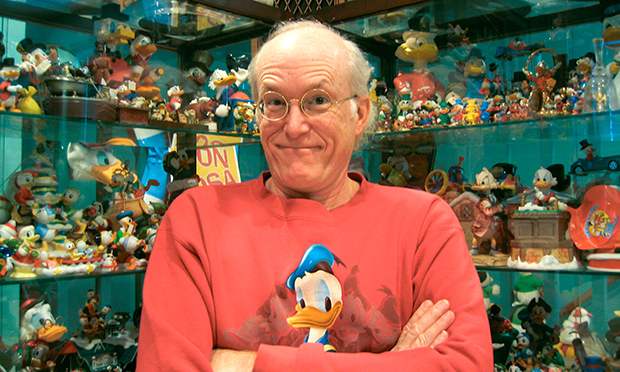
Don Rosa started writing and drawing Uncle Scrooge comics in the late 1980s, around the same time that the first Ducktales show was being developed. Ever since Carl Barks retired in 1966 (he continued to write stories and provide ideas for some comics until the mid-1970s). Disney comics had gone downhill. There were still a handful of good writers and artists, mostly Italian, but a lot of the comics produced were just cheap and hastily cobbled together with no thought to quality or entertainment. Don Rosa, who may be the biggest Carl Barks fan in the world, worked from the same principle as his idol: He wanted to make comics that he himself would want to read. Perhaps no wonder that his stories flowed over of references to old Barks stories, to the point where he even began making sequels to some of them.
Keep in mind, this was a time when sequels to Disney comics were near-unheard of; any given Disney comic story should stand alone and not hinge on any continuity at all. If Donald becomes rich at the end of one story, he’s always broke again at the beginning of the next. At most. you could have old guest characters return and perhaps make some vague reference to how they have met the main chars before, but beyond that, not really. Nobody cared about continuity… not even Carl Barks cared much about continuity. Don Rosa, however, cared very much about continuity. He was the sort to try and figure out when something had happened in relation to other things… and Scrooge McDuck, who even in Barks’s stories would constantly talk about the adventures of his youth, was the perfect character for this treatment.
So all in all, it’s not a surprise that, when it was finally decided that someone should make a comic about Scrooge’s backstory, to be like a “canon” background, Don Rosa got the job. And what a job he did.
The original twelve chapters of Life and Times of Scrooge McDuck were published as a serial in multiple Disney comic magazines around the world, from 1992 to 1994 (1994 to 1996 in America), and won a well-deserved Eisner award in 1995. Later on, Don Rosa wrote and drew six additional stories about Scrooge’s life which sort of filled in some of the gaps between the original twelve comics, bringing the total chapter number up to eighteen… plus an epilogue of sorts, which I’ll get back to.
And now, after all this, it’s FINALLY time to talk about the comic itself.
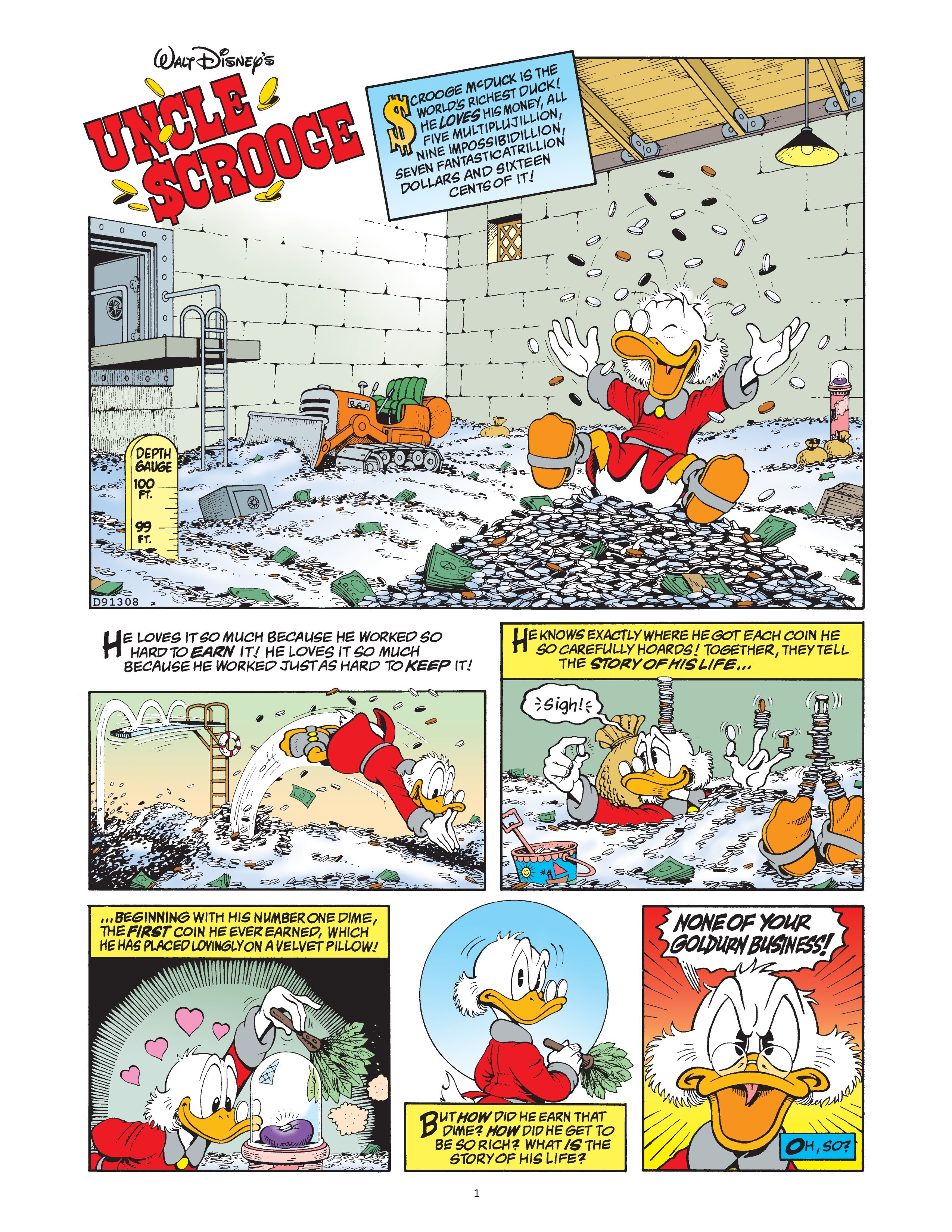
The twelve (or eighteen, depending on how you look at it) chapters of the comic follow Scrooge’s hard and grueling, but also epic and adventurous, journey from a ten year old boy in Glasgow who shines shoes to make a living… and all the way to the elderly multi-trillionaire in Duckburg. With each chapter looking at one specific era of his life. Old fans of Carl Barks’s stories will notice that most of the steps along the way are taken directly from Barks… almost all of Scrooge’s adventures and misadventures in this comic are based on, and examining in further detail, things that were mentioned in Barks-penned comics. Luckily, the story stands well enough on its own that even if you don’t have the faintest clue about Barks, you’ll still understand everything that goes on here… and if there seems to be a story thread that isn’t actually resolved in the story itself, then it’s a fair bet that it’s a set-up for a Barks story.
On the way we also get to meet Scrooge’s family; most prominently his father Fergus, his uncle Angus, and his two sisters Matilda and Hortense. Plus, we also get a long line of temporary mentors, acquaintances and adversaries, a lot of whom are real historical figures (like Teddy Roosevelt, whom Scrooge meets both before and after he becomes President!), each of whom help to shape Scrooge into the man (duck) he eventually becomes. But for much of the story we mostly get Scrooge as the lonesome adventurer and fortune-chaser, the guy who travels the globe and seldom stays in one place for too long because he’s always hunting for adventure and wealth… but mostly for wealth. He fails a lot, especially in the beginning, but he always perseveres… and even if he has to surrender and admit defeat in one area, he’ll always move on and try again in another.
A lot of people have held this comic forth as a tribute to hard work and perseverance, and yes, I can see that… Scrooge’s motto from early on is to be “tougher than the toughies and smarter than the smarties,” and this gets doubly important because he lives in an antagonistic and unfair world that isn’t interested in giving him a break. It’s purely because he gruels through long after any sane person would have given up that he ultimately succeeds… and succeeds beyond his wildest dreams. “Work hard and don’t give up, and you’ll do great” is a moral that fits right in with Disney in the 1940s, and I can see how The Life and Times of Scrooge McDuck fits pretty neatly in there.
But I also think that the message is more nuanced than that. In addition to being a story about the virtues of hard work, it’s also a story about the dangers of obsession, and how it can ultimately ruin a person. It’s the story about a man (duck) who sacrifices everything to reach his goal… and when he reaches that goal, he ultimately finds that he has nothing else left. Scrooge starts as a fairly idealistic youngster, with maybe a bit of a greedy streak. but over the course of his life he becomes increasingly cynical and misanthropic, and eventually his hunt for wealth becomes the only thing that matters to him.
There’s one page in this comic that REALLY sums up this theme. It happens to be the turning point, and in many ways the high point, of the story: The moment where Scrooge, after years and years of trying and failing, finally has his first unadorned success as a prospector in the Yukon:

I don’t want to give the impression that The Life and Times of Scrooge McDuck is a bleak or depressing story. It’s got a pretty cynical worldview, yes, but it’s also filled to the brim with cheeky wit and humour. The characters snark and banter endlessly, and even though Scrooge’s many setbacks do have their serious consequences, they also include a lot of cartoony slapstick, and a Scrooge who eventually becomes such an exaggeratedly tough bastard that he goes straight into being a parody of the invincible action hero, especially if there’s a chance of profit. Minor characters are often seen doing silly stuff for a few panels or just in the background, and there are several both epic and really funny action scenes… my fave being the battle of Killmotor Hill in chapter ten, where Scrooge tears apart the crumbling Fort Duckburg to use the walls and turrets as weapons, while Hortense (who will later become Donald’s mother) chases after an entire army, trying to beat them with a broomstick.
Plus, the drawings in the comic are worth a special mention. The samples here give some small samples of the beautifully detailed backgrounds. Don Rosa draws the scenery in loving detail, from the marches of Glasgow, to the African savannah, to the developing city of Duckburg. He’s also fond of adding little jokes and gags in the background… like that eagle on the above page, the one who sits in a tree and watches the joyful Scrooge with bewilderment. In the last chapter, there’s even a meta moment where Scrooge has the Eisner award for The Life And Times of Scrooge McDuck on his wall, and Donald insists it has to be a fake.
And in the end, the comic does go out on a positive note, as the final chapter ties in with Scrooge’s very first appearance in Christmas on Bear Mountain, the chapter where Scrooge, as a disillusioned, bitter and grumpy recluse, finally reconciles with what’s left of his family — Donald, Huey, Dewey and Louie — and through his interactions with them has his old zest for life and adventure re-awakened. Which of course will lead to the many adventures he has with his nephews, penned by Carl Barks, Don Rosa and others.
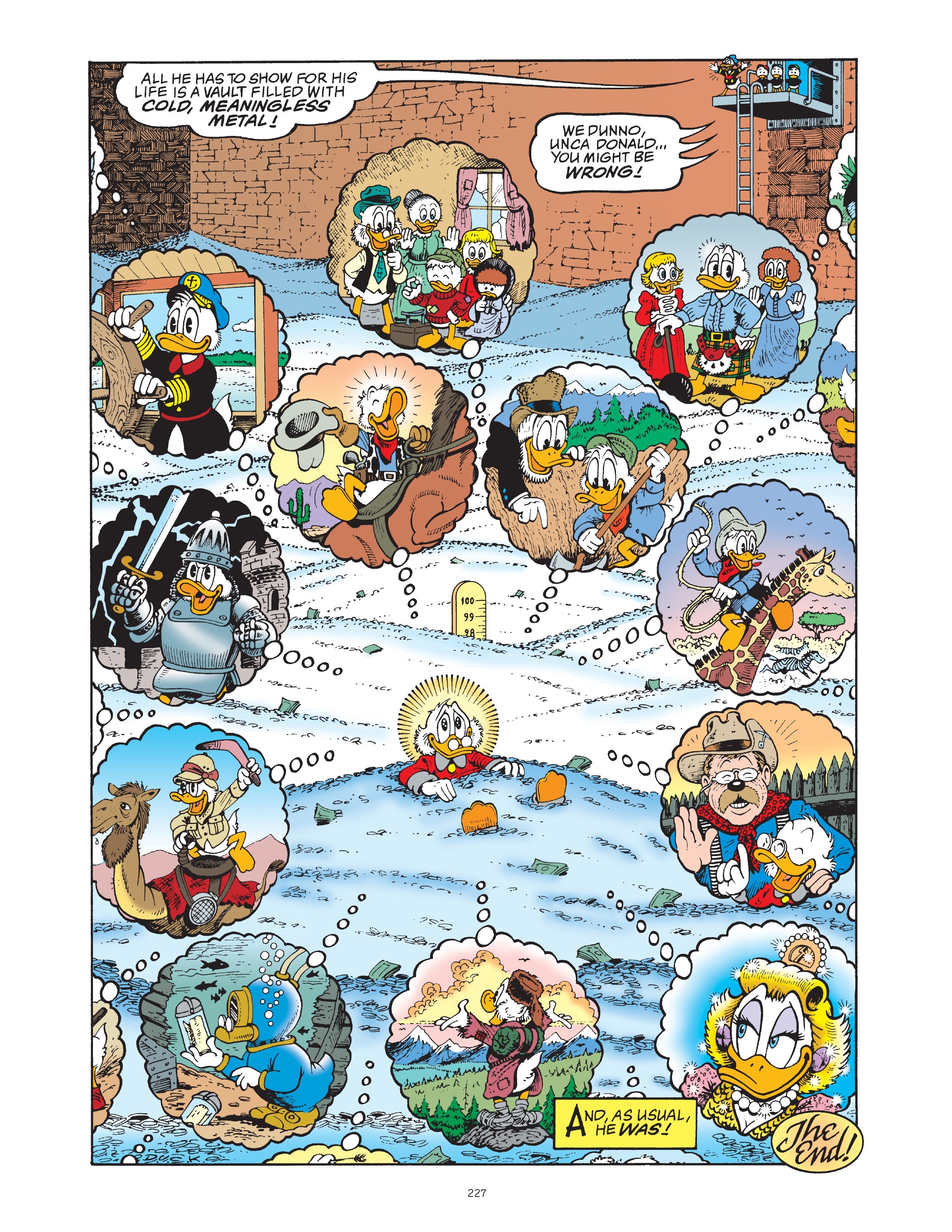
I mentioned that there was an epilogue of sorts, and there is… well, there are kind of two, even if you ignore all the other Scrooge comics which this is a prequel to. But this story thematically fits so well in with The Life And Times of Scrooge McDuck that several collections have included it, and it really works as a sum-up of Scrooge’s adventurous life. It basically revolves around an invention of Gyro Gearloose’s, which allows you to enter another person’s dreams, and so the Beagle Boys try to enter Scrooge’s dreams because they’re certain he dreams about riches and secrets, while Donald follows them… turns out Scrooge only dreams of his past adventures, so we get Donald and the Beagle Boys traipsing through scenes from Scrooge’s life, and their presence mess with events that the scenes take an entirely different turn. It’s hilarious.
The Life and Times of Scrooge McDuck is a truly epic story. Granted, it’s not COMPLETELY problem-free… Don Rosa’s main inspirations, outside Carl Barks and historical events, are old movies… old movies with somewhat outdated values. It’s not as bad as it COULD have been, and the casual racism of the era is usually toned down (the caricatured non-whites are at least mostly portrayed as well-spoken and reasonable adults, not childlike savages), but a couple of the jokes haven’t aged well. Likewise, this comic has the same problem as most old movies and even the Barks comics: It’s a total boys’ club. Girls are limited to cameos and side quests. Scrooge’s sisters are probably the most prominent female characters, but despite some fun moments with Hortense they really don’t DO anything in the story… and then there’s Glittering Goldie, the vampish love interest.
I won’t lie, I DON’T like Glittering Goldie. I like her less and less the more she is used in modern stories. She was fine in the one story she appeared in by Carl Barks, and I didn’t even mind her when she appeared in the old Ducktales show, but Don Rosa’s version kind of irks me… sometimes she’s okay, but sometimes she just slips into “dames, am I right?” territory. I could have lived with that, but this version of Goldie very clearly lay the groundwork for the Goldie of the current Ducktales show, one of the VERY few characters of that show that I outright HATE. She’s so awful, and the “Batman/Catwoman” dynamic they try to invoke with her and Scrooge is both icky and unconvincing. I suppose I shouldn’t hold this against Don Rosa’s Goldie, who is nowhere near that awful, but I can’t help it. She’s still ultimately only be there to be “the love who never was.” And yes, of course you couldn’t do a story of Scrooge’s life and NOT include her… I just kind of wish she’d been handled a little differently.
But you know what? These problems are small, compared to the general awesomeness of the comic. It’s still one of the best comics ever created; a love letter not only to Scrooge McDuck as a character and Carl Barks as a creator, but to classic adventure comics of the sort you hardly ever see anymore. It’s a fun, yet strangely poignant trip through the life of an adventurer and globetrotter, and it’s warmly recommended to anyone who likes a damn good adventure tale.
If you haven’t read it, then read it!

